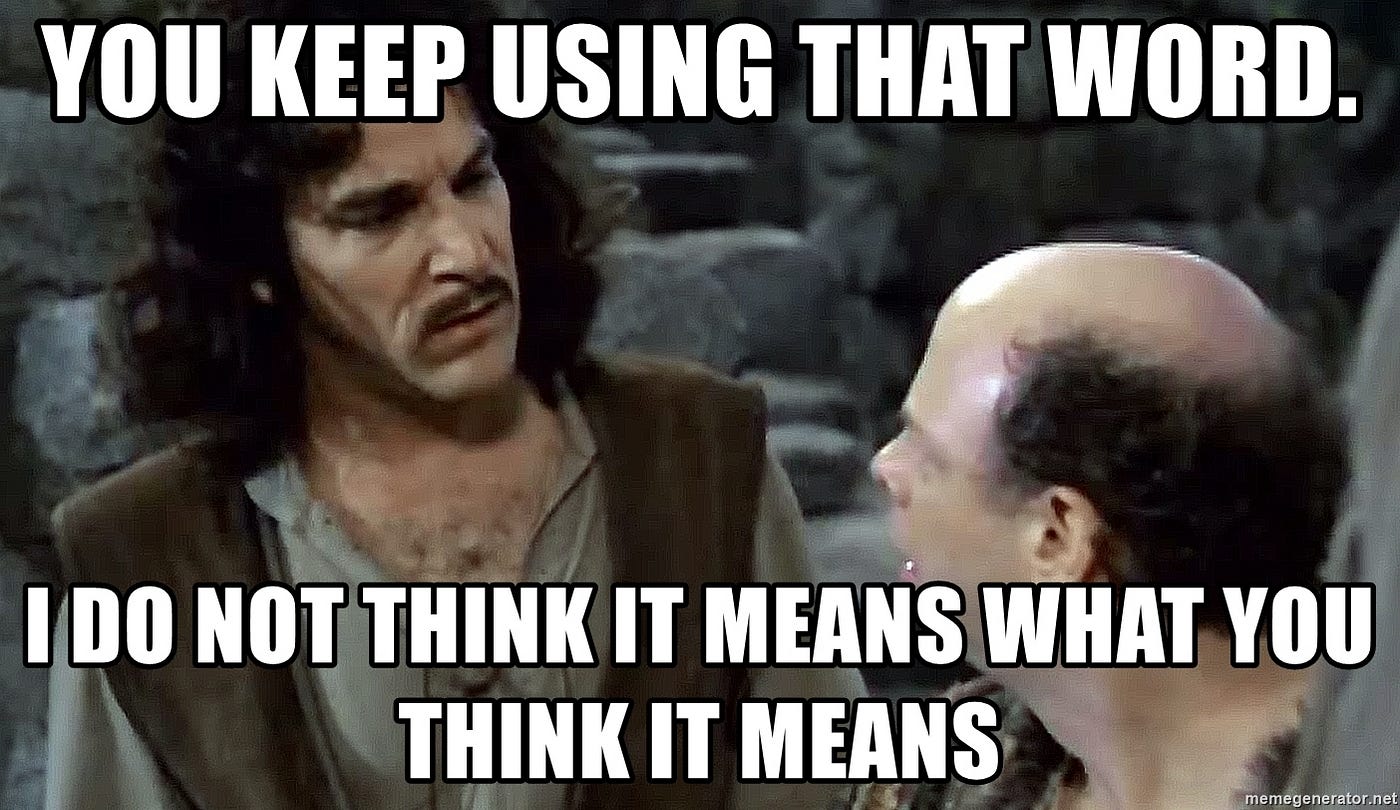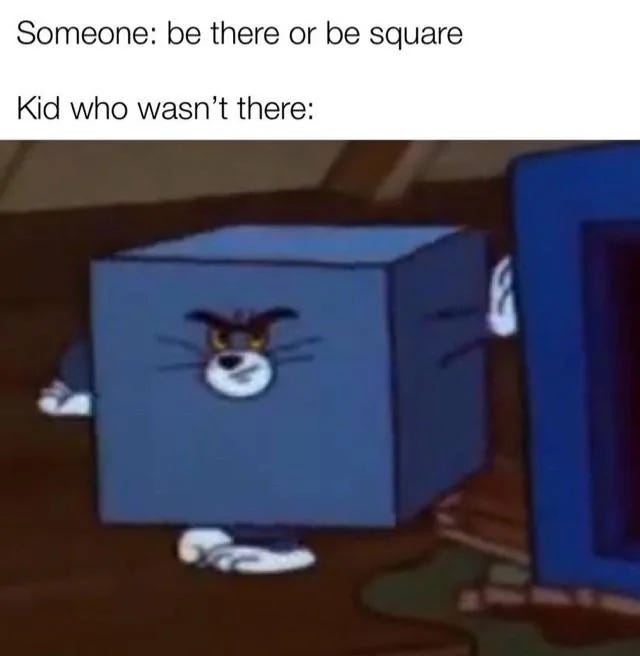Part 2. This is my Survival Document.
Digital space is the only architecture that some can survive because pathology simply cannot hold us anymore. Or, it never did.
For the previous piece, link below.
Part 1. This is my Survival Document.
Otherwise, onwards and upwards.
The Myth of Intensity as Diagnostic
Much of what is currently named as “dissociation” is only treated as clinically relevant once it reaches a level of intensity that someone else can observe. But intensity is not a precondition of harm—nor is visibility a reliable indicator of significance.
This is one of the first conceptual cracks that emerges when clinical psychology tries to hold digital life to account: the assumption that what cannot be easily witnessed, diagnosed, or described in linear cause-and-effect terms must be either subclinical, metaphorical, or insufficiently severe.
But dissociation—like most survival-based cognition—is not defined by degree.
It’s defined by context, and by structural incompatibility. A person might “check out” during a conversation and be interpreted as bored or disengaged. Another might escalate into an argument, and be labelled defensive or volatile.
Both might, in clinical language, map to different trauma responses. But the difference isn’t in their intent. It’s in what the body determines is most likely to preserve the self within the given conditions.
The dissociative response doesn’t arrive with a moral or performative agenda; anyone who “performs” dissociation is clearly ill acquainted with how much energy it actually consumes. It is, in fact, the refusal of drama—an interruption of narrative in favour of pattern.
What happens is not the point. Why it happens, and how that “why” recurs across time, is where the point hides.
No one dissociates because they want to. Why would people describe the feeling as doomscrolling as “mindless”, if it were an active state?
We dissociate because the brain has been trained—by experience, by repetition, by the failure of logic to protect us—to prioritise coherence under pressure. When a current condition echoes a past condition that once required dissociation to survive, the response is automatic. The recurrence is the logic. Intensity is irrelevant.
This is why I find the emphasis on identifying and treating dissociation only at its most extreme—only when it impairs speech, causes full memory blanks, or results in prolonged detachment—deeply insufficient. The system that insists we must “feel disconnected enough” to warrant support is the same system that refuses to see the micro-adjustments we make just to remain legible in a space that has never accommodated our logic.
This is especially true in digital environments. When the body is not physically required, when input comes in fractured, overlapping layers, and when context is shaped by velocity rather than continuity, the dissociative response is not a crisis—it is how coherence is achieved.
This is what the clinical model misses: that dissociation is not always a detour from the self. Sometimes, it is the only viable route to staying with the self inside an environment that would otherwise flatten or erase it or render it at the mercy of whatever the algorithm decides regarding their existence.
And if the internet seems to provoke more of it, perhaps it’s not because digital space is damaging, but because it finally reflects the kinds of logic—recursive, indirect, structurally incompatible with real-time embodiment—that trauma-wired minds were already living inside.
We talk about trauma like it distorts or seeks to destroy a timeline. But it also builds its own. A timeline with new rules, new accelerations, and a new internal barometer for what pressure feels like. When that internal barometer recognises something as incompatible with continued coherence, it responds. Not with explanation. Not with moral clarity. Just with “this is what works, continue”.
So no—dissociation doesn’t have to “look like” anything.
It doesn’t need to interrupt the room. It doesn’t need to be validated by a peer, a partner, or a therapist. It is not an event. It is a logic. And until we accept that its appearance is entirely dependent on the environment in which it operates, we will continue to misread it as pathology rather than pattern.
Digital Survival Logic Is Not a Metaphor
When you stitch trauma-coded responses that have been generalised through arbitrary samples of “proof” across demographics, contexts, generations and into digital space, what you’re doing isn’t adaptation—it’s translation.
The core schema—fight, flight, freeze, fawn—doesn’t break. It drifts. It finds new coordinates in order to remain sensical to orientation. These aren’t approximations, they are reformulations shaped by an environment with entirely different demands.
“Freeze” becomes something like ghosting. Blocking. Vanishing. But not vanishing completely—just tactically. A soft erasure. Selective illegibility. It’s not hiding, it’s muting the surface without triggering a collapse of presence. You are still there, but only to yourself. That’s not avoidance. That’s pressure regulation.
“Fawn” stops being a performance for one person and becomes a pattern response to systems. You’re not appeasing someone—you’re appeasing a rhythm. You’re adjusting to algorithmic attention economies, to the tempo of feed refreshes, to the cadence of what gets surfaced and what gets skipped. The pleasing isn't personal. It's systemic. You’re not being submissive. You’re being legible. And for many of us, that is the only form of safety we’ve ever been afforded.
“Fight” loses directionality. There’s no target body to strike. So the strike becomes conceptual—trolling, moral warfare, subcultural in-fighting. The explosion needs shape, so it finds whatever friction can hold it. It’s not that people online are more aggressive. It’s that the fight response in an environment with no exit vector gets routed into recursion. That’s where you get obsession, spiral, shadowboxing. The target doesn’t matter. Only the momentum does.
And “flight”? It’s not about leaving danger. It’s about migrating to where danger hasn’t yet been mapped. The move from Twitter to Bluesky, Discord to Telegram, one groupchat to another—it’s not retreat. It’s architectural recalibration. The self remains, but the terrain gets swapped. You don’t disappear. This redirection is coded in platform logic: new username, new format, new self-state. No one asks why you left. That’s part of the design. That’s the freedom that makes re-entry possible.
The thing that breaks here isn’t the schema—it’s the insistence that it has to be somatic. It doesn’t. It can be procedural. Structural. Embedded in clicks, in silences, in how you navigate a comment section. A lot of trauma logic is pattern logic, and what is digital space if not a pattern engine? A space where logic lives not in the muscles but in the mouse movement, the scroll, the reply.
The clinical mind struggles with this because it wants to locate action in the body. But in digital space, action is distributed; scattered. You do not need to feel the survival response in the chest or the throat to be in it. You just need to be inside a structure that demands your body comply with its rhythm. And then you must observe the shape you’re forced to take.
If you grew up inside trauma, you already know how to respond to a system that’s always watching. That always asks you to perform the version of yourself that is least likely to be punished. Digital space didn’t cause the behaviour. It made it visible.
And it finally made it functional.
The Directional Self
There’s a recurring fear in psychological and philosophical takes on digital identity: that we are becoming thinner. That the self is being flattened, simplified, disembodied into two-dimensional avatars that resemble us only in outline.
I think it is not that we are dissolving or becoming less, we are acknowledging that human needs are not as simple as accumulating traits or habits or behaviours and routing them within ourselves, but it in movement between all states that can be possible.
So, it becomes directional.
It is not a loss of self, but a recalibration of selfhood to meet an environment in which continuity is not rewarded, but mobility is. And mobility—whether across tabs, platforms, voices, or relational contexts—is not dysfunction.
It’s fluency.
You are deemed inept if you cannot learn to use an email, not because you are stupid, but because it will encumber your personal experience with digital space, alongside everyone else’s. There’s no pressure to learn how to use email, but it’s understanding that if you cannot, it doesn’t mean that you need to prove that it exists in order to intentionally restrict you and others like you.
Where there are those who cannot untie themselves to the tether of who they believe themselves to be: Joe from Marketing, the person who has “been that way always”, themselves as an assemblage of chronological experiences and impressions upon them, to move like a cursor across pressure points, adapting its shape depending on where it is required to land.
It is not only understandable that something like email could become overwhelming, particularly with its frequency, its unpredictable context, the feeling that comes with it that it is a letter sitting in a mailbox, and that the longer it sits, the more it deteriorates and you will be responsible for it. That the communication feels enough like a conversation that it follows the same rules, that they can repeat, remind, you can be reprimanded for missing or misinterpreting.
There is a physiological response to being denied you exist when you have been taught to sit still then asked after 50 years to get up and dance.
People confuse this movement with superficiality. They think a directional self lacks depth because it doesn’t accumulate in a single, narratively consistent identity. But that’s a nostalgic reading.
The self online isn’t reduced—it’s accelerated. Routed through expectation, context, platform constraint. And those pressures require a self that can change direction midstream without collapsing.
If anything, the directional self is under more pressure than the fixed one ever was. It has to signal intent without context. It must be simultaneously responsive and anticipatory.
Not because that’s what the person wants to be, but because it’s what the environment demands.
You either learn how to shift or you get misread.
Depersonalisation Is Not What You Think It Is Here
Depersonalisation isn’t the failure of identity. It’s the cost of having to manage its expression across incompatible terrains.
If you do not know where you are supposed to be on the internet, and do not have the tools to understand how to move within it, of course you get stuck in spaces that make you feel unwell.
This is the scourge of corporate spaces on the internet, in particular social media. Entrapment within spaces, providing the simulation of movement, but really embed the belief that you need to be there, specifically there, to exist, to be relevant? That’s the root of the illness, a demand that
And this is why I resist the language of “flattening.” What looks like a reduction from the outside is often a form of compression. A strategy. A way to transmit the maximal signal through a limited bandwidth. It’s not a lesser self—it’s a self under different structural terms.
We don’t describe actors as fragmented for being versatile across roles; the opposite is in fact true. We don’t pathologise bilingual speakers for switching codes depending on audience. But we still treat digital modulation as suspicious—as though the only valid identity is one that stays still, says the same thing, and does not alter shape.
But for those of us raised inside trauma-patterned logic, altering shape is how we survived.
The digital didn’t invent that logic. It holds in a space where the pressure to remain continuous is finally surpassed by the need to remain legible.
If the physical world demands that we “be ourselves,” but offers punishment when that self fails to meet norms, then the digital world offers a different proposal: be a self that moves. Be a self that learns. Be a self that understands that direction is not deviation—it’s design.
And for some of us, that’s not performance. That’s relief. The rest, well, I believe that is the physical worlds expectations that are required to answer for the illness it has caused as result.
Platform Logic and the Illusion of Autonomy
It is a kind cruelty—though cruelty nonetheless—that platforms are built to suggest freedom while demanding compliance. You scroll because you want to. You post because you chose to. You perform because you’re being authentic.
Except you’re not. You’re obeying.
And that obedience doesn’t look like constraint—it looks like coherence.
You are free to express, but only within forms that map easily to metrics. You are free to change, but only if the change can be read as evolution. You are free to disengage, but only if your absence can be understood as a pause, not a failure.
Platform logic doesn’t ask you to be yourself. It asks you to render yourself—smoothly, legibly, and in terms it can process.
This is what I mean when I say that the anxiety people feel in digital space is not about “losing their sense of self.” It’s about the cognitive dissonance of navigating a structure that demands fluidity while punishing inconsistency. You don’t get to choose what parts of you are rewarded.
You just learn what gets seen, and that is what you become moment to moment, or, over and over.
We mistake this dynamic for self-commodification, as though the individual is uniquely at fault for treating themselves like a product. But the conditions predate the choice.
The user is not commodifying the self—the platform is. People learn “valuable” skills in order to excel at a job, what is the difference in an environment where visibility is the goal, and the valuable skills whatever leads to it?
No one is “becoming”. It’s the same sort of thing as “becoming” your job. I think of how when people introduce themselves and the first question to follow “how are you?” or their names, is “what do you do for work?”
You are described by the way you are useful through the lens of economic viability. You're being assessed through the vignette of how you do, or do not make money. And how much? Why? Etc.
The example made in the article is dating apps, but this is where interface design explicitly reduces identity to components: age, face, tagline, location. You’re slotted into fields and then blamed for becoming field-shaped.
If you pay, you get more options.
If you don’t, you’re filtered into a lower strata of desirability. This isn’t social failure. It’s algorithmic triage.
Instagram. LinkedIn. Substack. Patreon. TikTok.
Every platform functions on the same logic: render the most legible, desirable, and interaction-producing version of yourself—and you will be rewarded. But only while that version remains current.
Being fired because of “who you are” on Instagram, is like being fired for being a character in a play, compared to the one that goes home, showers and unwinds before bed.
This is the illusion of autonomy that underwrites the entire digital experience: the idea that your ability to shape your selfhood is personal, moral, or expressive, rather than infrastructural.
You’re not making a brand. You’re following instructions—some of which are visible, and some of which are felt only in the nervous system, when posts don’t land, when a feed grows quiet, when a shadowban is suspected but can’t be confirmed.
Seen = safe. Seen = valued. Seen = real.
And the cost of that visibility isn’t just emotional. Because the more time you spend translating yourself into terms that a platform will understand, the more estranged you become from the version of yourself that existed before the translation.
What if the platform isn’t distorting anything, but simply revealing the modularity we’ve always relied on, now rendered as interface?
What if this sense of dissonance is not the result of digital distortion—but of finally seeing, unshielded, how contingent identity has always been?
This is the crack the article never quite touches. It is avoided often, because to admit so, particularly where the stakes are looping your professional persona in with the one you’re occupying online, are fraught.
In psychology, they always get close—acknowledging dissociation, disembodiment, digital ego states—but ultimately retreats to a therapeutic model that frames the loss of self as a problem to be fixed. It presumes that autonomy exists in some natural, pre-platform state. That fragmentation is a deviation. That the task is to return.
But what if there is no return?
What if the integration they long for was never a real starting point, but just a story that worked for a while—until it was outpaced by scale and then, by showing there was not one shape to hold structure?
Algorithmic Pressure as Directional Force
What is often mistaken for anxiety in digital space is not the existential loss of a stable self, but the continuous recalibration of the self within structure.
Algorithmic pressure and its effects are specific to the intrusion of standards that existed before digital spaces were created, and in the early days of digital spaces when it was still being “felt” out.
When people say they feel “lost” or “tired” online, what they are describing is not disconnection—it’s the strain of maintaining coherence under conditions that demand constant adjustment. This is what algorithmic pressure causes, through its artificiality in an environment where nothing is artificial - everything exists.
This isn’t about knowing who you are and forgetting because of over-exposure and adaptation, or even a flattening sense of self. It’s about being asked to become, again and again, under architectures that do not allow for embodied rest.
That ask you not simply to exist, but to format yourself in a way that can be measured, traced, and rendered interpretable to others—and to the machine.
That is not flattening, dissolution or even disorientation, that is contortion.
The algorithm is not a force that notices you and rewards you. It is a force that notices the shape of coherence as has been programmed into it. Once it is identified, it accelerates it. The closer you are to a recognisable rhythm that the algorithm is designed to capture, the more visible you become. But visibility is not attention. It is demand.
Every time you engage, you feed it. You confirm its predictive accuracy. You refine its model. And that model becomes the terrain you must now navigate—until your past actions become the only route forward. It is not memory; it is momentum that only applied to shapes that fit the slipstream.
And the longer you’re there, the harder it is to remember where you began.
This is not dystopia, a barren terrain to navigate or one that is a living trip wire.
This is recursion.
What makes trauma-wired or digitally native minds particularly susceptible to algorithmic influence is not their fragility—it’s their fluency. These are people whose cognition is already recursive, already patterned, already oriented around velocity as a form of safety. The platform recognises that movement. But it doesn’t follow it. It understands it as something that if rewarded, it is in a better position to manipulate.
Recursion, when enacted by the trauma-wired mind, is a method of mapping. It’s self-directed, even when disoriented. It spirals not to collapse, but to recalibrate. It repeats not to regress, but to locate.
But algorithmic recursion is not spiral; it’s compression. It performs pattern-seeking not as meaning-making, but as exploitation. Not “you are here again, what do you see differently?” but “you were here before, and we will bring you here again until you perform what we consider legible.”
This simulated motion—this loop that appears like a spiral—is where the danger lies. Because to the trauma-shaped mind, pattern equals survival. But when the pattern is governed externally—when it is enforced, predicted, and refined by an architecture that uses your pattern logic against you—it stops being survival. It becomes erosion.
This is why the algorithm can feel uncanny, even to those fluent in its structures. You recognise its movement, but not its intent. You see your own logic mirrored—but with the agency drained out. You sense the velocity, but not the choice.
For someone whose sense of self is already distributed across survival states, the pressure to remain visible within the loop—to simulate your own motion just enough to stay legible—can feel like dissociation, not from the self, but from motion that no longer belongs to you.
The harm isn’t that digital space moves. The harm is when your native movement is co-opted by a system that pretends to move like you, but doesn’t allow you to change direction.
This is Coercion, Not Freedom.
This is why consent becomes so distorted in these spaces, and why attempts to honour traditional standards of consent, do not translate.
E.g. harm minimisation by punishing hate speech, by banning teenagers from social media to control its effects on the psyche or by putting a paywall or an age lock on a website to acknowledge “only this person is allowed”.
The platform doesn’t spiral with you. It loops. It narrows. It optimises. It says: if you reacted once, you will react again. If you paused here, you will pause again. If you opened this, you will want more like it. If you hesitated, we will replace your hesitancy with speed.
This creates a situation where survival becomes a matter of prediction management. Not resisting the algorithm, but appearing predictably unpredictable—enough to be interesting, not so much that you vanish. Enough to disrupt, not so much that you collapse.
That pressure is not emotional. It’s structural. And so is the cost.
Because the self you upload is a self formatted for legibility, not complexity. A self shorn of the unfinished edges. A self that responds cleanly to prompt, that doesn’t glitch, that doesn’t ask for a moment of incoherence to regroup. And the longer you spend in that state, the less accessible the unrendered parts of you become.
And yet those parts still act. Still think. Still twitch in the body. They just no longer show up in the feed. This is where the gap widens between what is seen and what is lived. Between what is presented and what is endured.
The algorithm doesn’t kill the self or split it. It trains it. And like all training, it does so through repetition and reward.
So, when the article frames this as a “trance state,” or suggests that dissociation online leads to flattening, the assumption is that disconnection is the problem. But for many of us, disconnection is the skill. It is what kept us alive in the environments that asked us to be too many things at once. The internet did not invent that. It just gave us a place to do it without immediate bodily risk.
This is the difference between reading algorithmic pressure as oppression versus reading it as gravity. Gravity is not bad. It’s just a force. But when you’re only taught to walk in one direction, any other movement feels like failure.
That’s not the internet’s fault. That’s the lie of a society that only recognised a narrow range of stability as legitimate.
And here’s the paradox: the same structure that constrains us is the one that allows for recognisability. The algorithm mirrors trauma not because it harms us in the same way, but because it structures interaction according to survival logic—repeat what works, abandon what doesn’t, follow the pattern until it breaks.
To ask people to ignore that logic in favour of integration is to ask them to discard the one form of intelligence that keeps them alive in an environment they are expected to understand as it inhabits every space we occupy, structure irrelevant.
So we don’t. We comply, recursively. Not because we are weak or addicted, but because compliance is not moral. It is directional. We do what moves. We stay where the pattern holds. We go quiet when there’s no thread to follow.
And if you want to know why some people don’t “log off,” it’s not because they can’t. It’s because this is the only terrain where their movements have ever made sense, or they have trained that this movement, will allow them to maintain the concept of sense itself.
Integration Is Not the Goal
There is a growing split—not between those who are online and those who are not—but between those whose cognition aligns with the structure of digital space, and those whose presence online is forced through the framework of physical-world expectations.
The first group is not necessarily younger, or more tech-savvy, or “chronically online.” They are those for whom digital space functions not as an escape, but as a compatibility layer.
Their mind naturally, or can move, like a meme: recursive, relational, non-linear, non-coherent by design. Their digital presence is not fractured because they are lost. It is dispersed because that’s where fluency lives.
These are the users who intentionally become incoherent—not as rebellion, but as rhythmic refusal. They drift. They distort. They operate multiple selves across a single platform, not to mask instability, but to show that motion is coherence. The same way a meme changes its shape but not its function. The shape-shift isn’t deception.
A meme shows you exactly how the motion of the internet “works”. The ones that move and the ones that don’t, how they resurface, how they distort - all evidence of motion that is natural to the internet.
Contrast this with the second group: those who are in pressure cookers of physical, institutional, or familial coherence, and who are forced to carry their “whole self” into digital terrain.
They are told to be visible, but not too much. Consistent, but not robotic. Authentic, but not weird.
These are the ones most at risk of collapse—not because they are weaker, but because they are asked to perform legibility across two incompatible value systems.
This is the condition that produces what we now call "influencing." Not as aspiration, but as a compliance schema. You become a brand not because you want to sell something, but because the only viable identity left is one that performs the illusion of static coherence across time and space.
Notice how lip filler disappeared with the Kardashians? Interesting hey.
Notice how the Kardashians disappeared full stop? Not their intention, but the movement of the internet decided for them. They will call it intentional, or fatigue, it’s not. It’s the registering that you have worn out, and your brand hinges on the lack of contortion you go under and the narrative strength of your being. These things are increasingly unimportant in the saturated feed.
You optimise not to grow—but to survive in both terrains. And when the logic of each space contradicts the other, what do you do? You become a symbol. Not a self. A product legible to the algorithm and reassuring to the family, the peers, the school, the feed.
But here’s the lie at the heart of that model: that the self should be integrated. That it once was whole, and digital space has split it. That fragmentation is the wound, and integration is the healing.
But what if the integrated self was always an aesthetic, imposed by people whose conditions never required splitting in the first place?
To survive trauma, we split. To survive institutions, we perform. To survive online, we shift. Which of these is not integration?
Or more precisely—which of these integrations are counted?
“Integration” in the clinical sense assumes that stability is found by returning to a prior self, or becoming one that is coherent, steady or constant. But for those of us wired by structural rupture, the “before” self was never fixed.
It was a survival artifact.
The digital, at its best, didn’t destroy that—it exposed it. It showed us that identity isn’t a container. It’s a rhythm.
It’s why there are people online who are culturally “significant'“ to the digital age but feel almost uncanny, and those who are who are significant who feel shapeless and almost un-human.
Digital Native Influencers Versus The World
A good example to work through that previous section, is made through influencers, one in particular comes to mind.
Abbie Chatfield represents the performance of adaptiveness, not actual digital fluency. Her trajectory mirrors the application of a legacy media model onto digital space: linear career progression, media training, brand partnerships, controversy management.
But all of that is built atop the assumption that visibility and authenticity are compatible.
They are not. Not anymore.
What’s clunky isn’t the content—it’s the friction between what digital space rewards (velocity, recursion, illegibility-as-relatability) and what traditional public figures were trained to manage (consistency, clarity, brand coherence).
So what you end up with is a simulated messiness, packaged as “real,” but following a script that assumes moral resolution is not only possible but profitable. The digital sees through that instantly.
Whereas the truly fluent ones—especially on TikTok—don’t simulate chaos, they embody the logic of drift. They don’t build personas to withstand scrutiny; they build formats that can mutate. They are not “relatable” because they show us their lives.
They’re relatable because they replicate how it feels to be online.
That surreal, rhythmic, pressure-cooked drift where the joke is a coping mechanism and the dance is a refusal and the caption is a second-order recursion of the thing the body cannot say.
Abbie Chatfield is the image of adaptability, stilled into branded coherence. TikTok trend-creators are adaptiveness itself, pulsing and distorting with the pressure of their moment. They’re not building selfhood to survive—they’re shaping the structural terrain that survival now takes place in.
When people like Abbie Chatfield appear clunky online, it’s not because they are bad at the internet. It’s because they are performing the wrong logic. They are applying linear rules to an ecosystem that runs on acceleration, recursion, and the distortion of the self as form, not character. Their adaptability isn’t movement—it’s pre-approved shape change.
TikTok trend-makers, meme artists, shitposters who loop through irony, glitch, hypertext, absurdism, refusal, and multiplicity—not because they want to obscure who they are, but because their presence is structurally relational. Their identity isn’t in what they say. It’s in how they move.
Digitally fluent people aren’t trying to look “whole”—they’re trying to be readable at speed. You’ll see accounts with 5 usernames, cryptic bios, layered irony. They're resisting capture while still remaining visible.
That’s not disorganisation. That’s defense architecture. It’s also the most human thing a person can do when under pressure: modulate presence, control legibility, reduce the surface area of vulnerability. The irony is a smokescreen; the glitch is camouflage.
Compare this with Abbie Chatfield-style branding, where “vulnerability” is confessional and flattened into digestible, emotional coherence: I was like this, but now I’m this, and here’s how I got here. It has a beginning, middle, end—and a punchline. Digital-native incoherence has no arc. It loops. It pivots mid-sentence. It vanishes. It’s not hiding—it's digesting.
TikTok creators don’t think of themselves as people, it is a program you run when you need to. A dance isn’t a dance—it’s a file you run through your own body. A skit isn’t a joke—it’s a reference engine that gains meaning only in collective rhythm. The form moves through people. That’s fluency.
It’s also the opposite of the legacy influencer model, where the person is the product and the format builds around them.
Influencers with real-world logic apply the formula backwards:
I exist, so the platform must accommodate me.
But digital fluency says: The platform exists, so I will learn how to move inside it without fracturing.
It’s about survival within logic, not despite it.
Fluent creators aren’t apolitical for this reason—they’re structurally evasive. They move through and alongside contradictions, not to resolve them, but to avoid being trapped by them. They use queerness, irony, absurdity, refusal, hyperbole, stimming, repetition, glitch—all to indicate that they’re inhabiting a space that can’t be made moral through narrative closure.
This is why so many "media trained" influencers are perceived as disingenuous when they make “statements”—because they're applying narrative closure where people are already fluent in recursion. It's not that users want no accountability.
It’s that they want structural coherence before they want moral performance.
Watch how people move on TikTok versus Instagram versus Twitter (X) versus Discord. Digitally native people don’t “post.” They ride the logic of the tool. That’s why TikTok creators feel alien when they jump to Instagram—because IG rewards static aesthetic cohesion, not adaptive motion.
Abbie’s clunkiness, or any influencer like her, are not a personal failures. They’re the artefact of misapplied logic: moving linearly in a space that no longer believes time is real. Her apology videos, her “hot takes,” her “raw” talks—these are all attempts at coherence in a structure that rewards fragmentation performed fluently.
And this is where value becomes apparent, and the means.
Some monetise because they must, others because they can’t not. The difference?
The first group commodifies presence and coherence.
The second group commodifies velocity and pattern.
Fluency is not about being anything. It’s about surviving the structural conditions of a space that was never designed to reflect back a whole self.
The fluent ones know this, which is why they keep changing shape. The others try to restore shape, and that’s why they clunk.
Digital space didn’t break the self. It revealed that the self was already held together by performative rituals: dress codes, tone of voice, office etiquette, school uniforms, facial expressions that count as “respect.”
When those rituals fall away, you don’t lose the self—you see it. It was always recursive. Always in revision. Always under construction. You were just too busy holding it together to notice.
Integration is not a goal. It’s a constraint. And when you build a theory of the mind around integration, what you’re really doing is demanding stasis. You’re saying: hold still so I can understand you. Hold still so I can name you. Hold still so I can return you to the system that needs you to stay in one place.
But for those of us who only survive through movement, that’s not healing. That’s erasure.
To demand integration is to ask a recursive system to halt. But systems like us don’t halt. We cycle. We shift. We change shape mid-sentence. And the digital finally gave us a terrain where that wasn’t pathology.
It was the interface.
It is not flattening—it is the recognition that the self we imagined was only ever held together by demand. That we are seeing that the self is not what we expected, and that is an ego death, not a state. One that is required and doesn’t require acknowledgement or dissociation to comprehend who one must be, only due to demands of an artificial structure.
It’s not pathology. It’s structural readjustment.
The System Is the Disruption
The disruption is not digital space. The disruption is the expectation that there was ever not disruption.
Clinical language, institutional logic, and even a large portion of media critique still carry a baseline assumption: that once, people were integrated. That there was a time of selfhood, of linear cognition, of moral coherence, and that the digital has disturbed it.
But for those of us wired through rupture—neurologically, structurally, socially—there is no “before.” There is only structure.
The idea that digital space introduces fragmentation is a projection from those whose coherence was never tested until now. Those who were made legible by the world as it was, and are now demanding the internet re-perform that recognition. But for the rest of us, digital space isn’t a disruption. It’s a system that finally reveals the others were always fragmented too—just better camouflaged.
The internet did not create trauma logic. It didn’t force multiplicity. It didn’t fracture the self. It stripped away the scaffolding that made those things invisible. It revealed the recursive, mimetic, dissonant, nonlinear architectures that most people had spent their entire lives suppressing through performance.
This is why people feel “crazy” online. Not because the space itself is harmful—but because it holds up a mirror and shows you the incoherence that was always there. And when there is no familiar script to resolve that, when your identity is no longer protected by the rituals of physical space—etiquette, fashion, tone, hierarchy—you’re not disoriented.
You’re exposed.
This is not a problem to be solved. It is a structure to be understood.
This is where even the best-intentioned writing about trauma and the internet falters. Because it keeps trying to fix something that is only broken if you assume your static standards are the goal. But for people whose lives have never allowed for that kind of stability, the presence of a system that functions despite incoherence isn’t disruptive.
It’s affirming.
Visibility At Scale.
The clinical mind wants to identify dysfunction so it can restore function. But what if “function” has always been an aesthetic? What if the real harm isn’t in multiplicity, or fragmentation, or recursion—but in trying to trap a moving cognition in a static container?
What if the system was the pathology all along?
What you name “symptoms” are often structural adaptations. What you call “maladaptive” is often rhythm tuned to a different drum. What feels like suffering is often the dissonance between how you move and what the system demands you become in order to be witnessed.
And here’s the hardest truth: the digital didn’t invent that system. It just removed the padding. It removed the costumes and scripts and physical buffers that allowed people to pretend their legibility was natural, not enforced. Now, without the buffer of physical performance, the incoherence becomes visible.
Not created. Visible.
And this visibility? It scares people. Not because it’s new. But because it proves that the “normal” self, the “coherent” identity, the “integrated” psyche were always performative conditions. And that means everyone is closer to collapse than they thought. Or more precisely—they were never not collapsing. They were just performing balance on a loop.
That’s the disruption: not trauma, not speed, not overstimulation.
The sudden, recursive rendering of how a self is made and sustained, the reveal that “being okay” was never a state—this is just a mask worn convincingly, and the mask doesn't work in code.
In this space, the demand to integrate, perform, or stabilise becomes not only incoherent, but cruel. Because it denies people the right to exist inside the motion they were built to survive.
If you feel exhausted by the internet, ask yourself: are you tired of being online—or are you tired of performing recognisability in a space that keeps asking you to prove you exist? Because the internet doesn’t ask that. The system does. The system always did.
Digital space just makes that demand seen.
Deep Breath Now.
Digital life is framed as an interruption, a distortion, a less-than-real proxy for the embodied. As if embodiment itself wasn’t also a performance under previous conditions. As if the body has ever been a fixed guarantee of presence.
In a world that constantly argues the conditions that make you matter? What makes you think that the internet would behave any differently with those standards applied?
When we speak about the self in crisis, we rarely ask: whose crisis? According to whose standards?
The internet didn’t make people incoherent. It gave incoherence a form. A terrain. A rhythm. A logic. And for those of us shaped by trauma, by dispossession, by cognition that defies the linear—this wasn’t a disruption. It was recognition.
We are not trying to integrate. We are not trying to stabilise. We are trying to continue. And sometimes, that means changing shape so completely that nothing familiar remains except the movement itself.
Through this, we see digital space as a fault line that ached and groaned until the erosion said, you know what, it’s time.
It is collapse caused by the system. A structural rendering of all the conditions that made performance mandatory and made coherence a virtue. And in that hole it’s leaving, we see not dysfunction—but design.
A design that no longer fits.
This is why the language of pathology fails here. Not because people aren’t suffering. But because the framework is built on a definition of “self” that assumes integration is both desirable and possible. For many of us, it’s neither. We’re not trying to return to wholeness. We’re trying to survive structure.
And when survival requires drift, recursion, multiplicity—then those aren’t symptoms. They’re tools. Not signs of illness, but maps. O
To pathologise this is to demand that people amputate the very strategies that keep them alive.
So no—this isn’t about flattening, or detachment, or disconnection. This is about re-tuning what it means to think. To appear. To mean something in a space that recognises your presence only when you fit—and punishes you the moment you fall out of sync.
But if you’ve made it this far, you already know: the sync was never real.
The sync was a performance. The sync was imposed. The artificial sync that you were asked to find is was what got you here. And now, you’ve realised you followed a voice not in your own head, but all around.
We move because we need to, and the system asked us to be still.
We just got our circulation back.

















